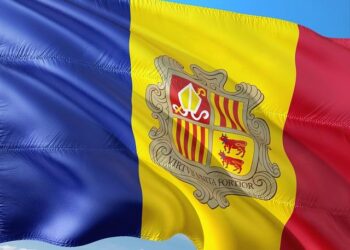Nestled in the Pyrenees between France and Spain, Andorra is a small principality with a unique political tradition: its head of state is jointly held by two co-princes-one of whom is the sitting president of France. This centuries-old arrangement means that every time France elects a new president, Andorra effectively crowns a new prince. As modern dynamics evolve, this intriguing constitutional setup remains a testament to Andorra’s distinctive sovereignty and its enduring ties to its larger neighbor. In this report, we explore how Andorra’s dual leadership works, its historical roots, and what it means for the relationship between the tiny nation and France.
Andorra’s Unique Political Tradition Confers Princely Status on French Presidents
Since 1278, Andorra has maintained an extraordinary political tradition rooted in co-principality, where sovereignty is jointly held by two princes. What makes Andorra’s system truly unique is that the Co-Prince representing France is not a hereditary monarch, but rather the sitting President of France. This arrangement transforms every French president into a prince, granting them a distinctive status seldom seen in modern republics. The other Co-Prince is the Bishop of Urgell, a Spanish cleric, creating an unusual dual leadership across national borders that continues to this day.
While largely symbolic, the title carries historical weight and diplomatic significance. The French president, by virtue of this tradition, actively participates in Andorran affairs, including approving some laws and diplomatic appointments. Here is a brief overview of the bicameral relationship:
- French President: Serves as one of the Co-Princes, elected every five years in France.
- Bishop of Urgell: Represents the Spanish side, maintaining ecclesiastical authority.
- Joint Responsibilities: Shared sovereignty, legislative approval, and ceremonial functions.
| Role | Title Conferred | Origin |
|---|---|---|
| French President | Co-Prince of Andorra | Established 1278 Treaty of Perpignan |
| Bishop of Urgell | Co-Prince of Andorra | Ecclesiastical Legacy |
Exploring the Historical Roots and Future Implications of Andorra’s Dual Leadership System
Andorra’s unique system of dual leadership dates back to the 13th century, when the tiny Pyrenean principality was established as a co-principality under the joint sovereignty of the French Count of Foix and the Spanish Bishop of Urgell. This arrangement, designed to preserve Andorra’s independence amid powerful neighbors, endures today in a modernized form. Remarkably, the French co-prince is now always the sitting President of France, effectively making every French leader a prince in title. This centuries-old compromise not only symbolizes the delicate balance of power in the region but also reflects an innovative political solution that has allowed Andorra to maintain its autonomy through European upheavals and shifting alliances.
Looking ahead, the co-principality raises fascinating questions about sovereignty and governance in the 21st century. While the dual leadership system offers a rare example of shared authority between a secular head of state and a religious figure, it also challenges assumptions about national identity and democratic representation. As Andorra faces globalization and increasing integration within European frameworks, debates intensify over potential constitutional reforms and the evolving role of the co-princes. Below is a snapshot of key features of Andorra’s leadership structure and its potential future trajectories:
- Co-Princes: French President & Bishop of Urgell
- Role: Mostly ceremonial with limited executive power
- Legitimacy: Rooted in medieval diplomacy
- Modern challenges: Balancing tradition with democratic reforms
| Aspect | Historical Context | Future Implication |
|---|---|---|
| Dual Leadership | Co-sovereignty from 1278 | Potential shift toward greater local autonomy |
| French President’s Role | Inherited title from Count of Foix | Symbolic authority with diplomatic weight |
| Religious Influence | Bishop’s traditional power base | Balancing secularism and tradition |
To Conclude
As Andorra continues to uphold its unique tradition of appointing France’s president as its co-prince, this small principality remains a fascinating example of enduring medieval customs woven into modern governance. The symbolic role underscores the deep historical ties between Andorra and France, while highlighting the country’s distinctive political identity in contemporary Europe. As future French presidents take on this unusual mantle, Andorra’s dual leadership will persist as a rare and intriguing feature on the international stage.
















